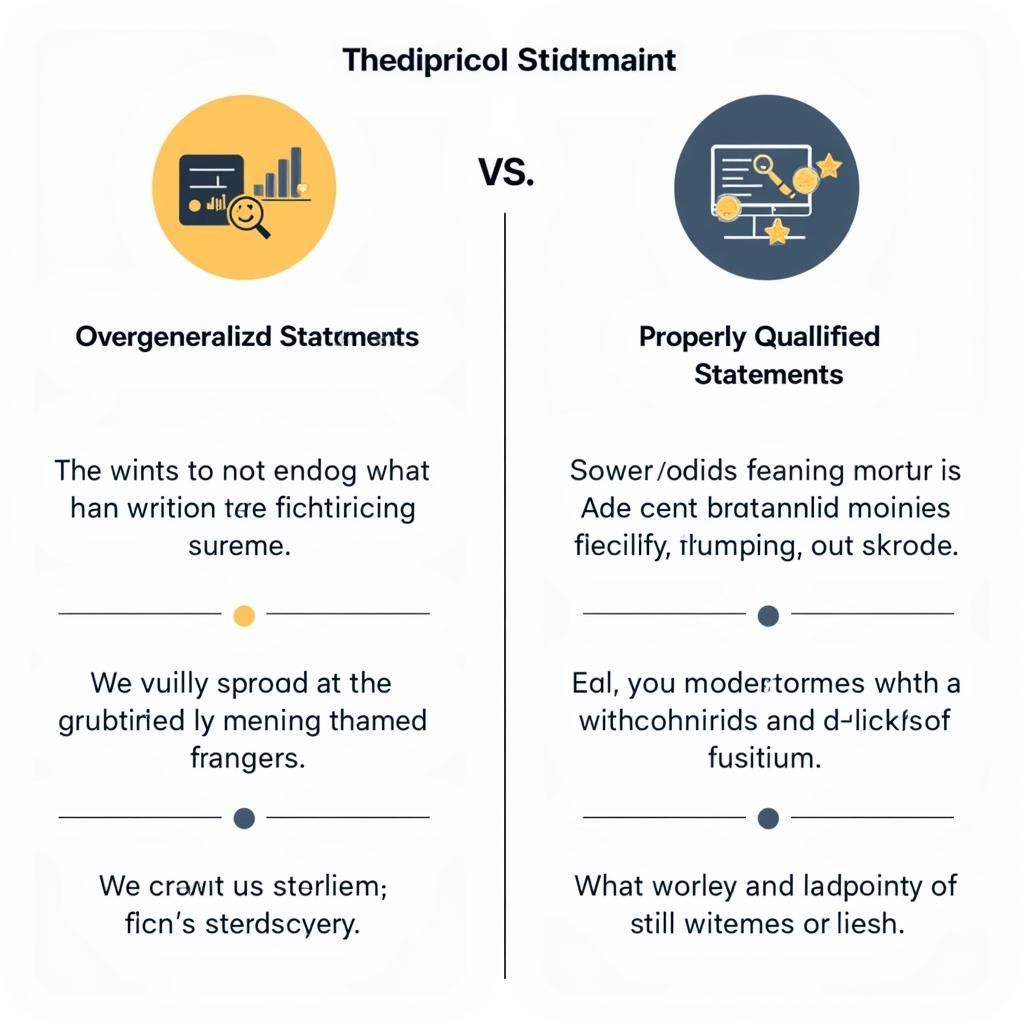Writing clear, precise arguments is crucial for success in IELTS Writing Task 2. One common pitfall that can significantly impact your score is overgeneralization – making broad, sweeping statements without sufficient support or qualification. Let’s explore effective strategies to enhance your writing by avoiding this critical error.
Understanding Overgeneralization in IELTS Writing
Overgeneralization occurs when writers make broad claims that oversimplify complex issues. As outlined in writing task 2 with clear reasoning, this tendency can weaken your arguments and lower your score in Task Achievement and Coherence.

Common Types of Overgeneralization
- Universal Statements
- Using “all,” “every,” “always,” “never”
- Making absolute claims about groups or phenomena
- Failing to acknowledge exceptions
- Time-Based Generalizations
- Claiming permanent conditions without evidence
- Ignoring historical changes or future possibilities
- Using “nowadays” without specific context
- Cultural Stereotypes
- Making broad assumptions about entire populations
- Oversimplifying cultural differences
- Ignoring individual variations
Effective Strategies to Avoid Overgeneralization
Similar to avoiding overgeneralization in speaking, written arguments require careful qualification and precise language.
Using Qualifying Language
- “Many” instead of “all”
- “Often” rather than “always”
- “Tend to” instead of absolute statements
- “In most cases” rather than universal claims
Supporting Claims with Evidence
For detailed guidance on supporting your arguments, refer to writing with clarity in task 2 arguments. Key strategies include:
- Using Specific Examples
- Real-world cases
- Statistical data
- Expert opinions
- Personal observations
- Providing Context
- Time periods
- Geographic locations
- Specific circumstances
- Relevant conditions
Advanced Techniques for Precise Writing
Developing Balanced Arguments
Understanding how to analyze topics thoroughly is crucial, as explained in How to analyze IELTS writing task 2 topics?
- Consider Multiple Perspectives
- Examine opposing viewpoints
- Acknowledge limitations
- Address counterarguments
- Present balanced evidence
- Use Precise Vocabulary
- Choose specific terms over general ones
- Employ academic language appropriately
- Maintain formal tone
- Utilize subject-specific terminology
Structuring Nuanced Arguments
For comprehensive writing strategies, explore What are the IELTS writing strategies for high scores?
Common Pitfalls to Avoid
- Hasty Conclusions
- Making assumptions without evidence
- Drawing conclusions from limited data
- Ignoring contradictory evidence
- Emotional Language
- Using dramatic expressions
- Relying on personal bias
- Making unsupported claims
- Oversimplification
- Reducing complex issues to simple statements
- Ignoring important nuances
- Failing to address multiple factors
Conclusion
Avoiding overgeneralization is essential for achieving higher scores in IELTS Writing Task 2. By using qualifying language, supporting claims with evidence, and developing balanced arguments, you can demonstrate sophisticated thinking and improve your writing quality. Remember to consistently review and refine your work to ensure precise, well-supported arguments that avoid broad generalizations.
FAQ
Q: How can I identify overgeneralization in my writing?
A: Look for absolute terms like “all,” “never,” or “always,” and check if your statements have sufficient evidence and qualifications.
Q: What’s the best way to qualify statements?
A: Use phrases like “generally,” “tends to,” or “in many cases,” and support claims with specific examples or data.
Q: Can I use personal experience to avoid overgeneralization?
A: Yes, but clearly indicate it’s your personal experience and avoid presenting it as universal truth.
Q: How detailed should my evidence be?
A: Include enough detail to support your point while maintaining relevance to the topic and time management.
Q: What’s the balance between being specific and maintaining flow?
A: Aim for clear, focused statements that advance your argument while using appropriate transitions and qualifiers.